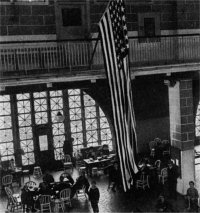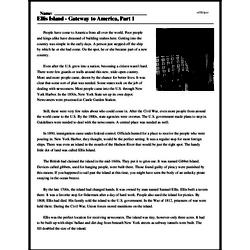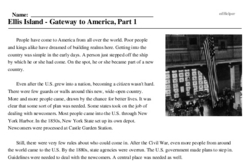Ellis Island - Gateway to America, Part 1
People have come to America from all over the world. Poor people and kings alike have dreamed of building realms here. Getting into the country was simple in the early days. A person just stepped off the ship by which he or she had come. On the spot, he or she became part of a new country.
Even after the U.S. grew into a nation, becoming a citizen wasn't hard. There were few guards or walls around this new, wide-open country. More and more people came, drawn by the chance for better lives. It was clear that some sort of plan was needed. Some states took on the job of dealing with newcomers. Most people came into the U.S. through New York Harbor. In the 1850s, New York State set up its own depot. Newcomers were processed at Castle Garden Station.
Still, there were very few rules about who could come in. After the Civil War, even more people from around the world came to the U.S. By the 1880s, state agencies were overrun. The U.S. government made plans to step in. Guidelines were needed to deal with the newcomers. A central place was needed as well.
In 1890, immigration came under federal control. Officials hunted for a place to receive the people who were pouring in. New York Harbor, they thought, would be the perfect setting. It was a regular stop for most foreign ships. There was even an island in the mouth of the Hudson River that would be just the right spot. The handy little dot of land was called Ellis Island.
The British had claimed the island in the mid-1600s. They put it to grim use. It was named Gibbet Island. Devices called gibbets, used for hanging people, were built there. Those found guilty of piracy were punished by this means. If you happened to sail past the island at this time, you might have seen the body of an unlucky pirate swaying in the ocean breeze.



